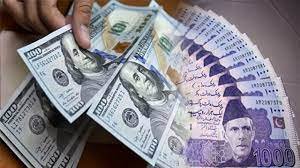
1 USD to PKR
1 USD to PKR
The exchange rate between the US Dollar (USD) and the Pakistani Rupee (PKR) is a crucial metric for individuals and businesses engaged in international trade, travel, and remittances. Whether you are planning a trip to Pakistan, sending money back home, or involved in import/export activities, knowing the current value of 1 USD to PKR is essential.
What is an Exchange Rate?
Before diving into the specifics of the USD to PKR exchange rate, it’s important to understand what an exchange rate is. Simply put, an exchange rate is the value of one currency when converted to another. Exchange rates fluctuate constantly due to various economic factors, including inflation, interest rates, political stability, and market speculation.
Historical Perspective of USD to PKR
The USD to PKR exchange rate has seen significant changes over the years. In the early 1980s, 1 USD was equal to approximately 10 PKR. However, due to various economic challenges, including inflation and political instability, the value of the Pakistani Rupee has depreciated significantly over the years. As of recent trends, the exchange rate has crossed 300 PKR for 1 USD, reflecting the economic difficulties the country faces.
Factors Affecting the USD to PKR Exchange Rate
Several factors influence the USD to PKR exchange rate. Some of the most significant ones include:
Inflation: Higher inflation in Pakistan compared to the US leads to a depreciation of the PKR against the USD. Inflation reduces the purchasing power of a currency, making it less valuable compared to currencies with lower inflation rates.
Interest Rates: The difference in interest rates between the US and Pakistan also impacts the exchange rate. Higher interest rates in the US attract investors to the dollar, increasing its demand and value against the PKR.
Political Stability: Political uncertainty in Pakistan can lead to a loss of confidence among investors, causing the PKR to weaken against the USD. Conversely, political stability tends to strengthen the currency.
Foreign Reserves: Pakistan’s foreign exchange reserves play a crucial role in stabilizing the PKR. When reserves are high, the country can defend its currency against depreciation. However, low reserves make the PKR vulnerable to fluctuations.
Trade Balance: Pakistan’s trade balance, which is the difference between exports and imports, affects the exchange rate. A trade deficit (more imports than exports) can weaken the PKR, as the demand for foreign currency increases.
Global Oil Prices: As an oil-importing country, Pakistan’s economy is heavily influenced by global oil prices. A rise in oil prices increases the demand for USD to pay for imports, leading to a depreciation of the PKR.
Current Trends and Analysis
As of the latest data, the exchange rate stands at approximately 1 USD to 300 PKR. This sharp depreciation is a reflection of Pakistan’s ongoing economic challenges, including high inflation, a large trade deficit, and low foreign exchange reserves.
The depreciation of the PKR has significant implications for the country. For one, it makes imports more expensive, which can lead to higher prices for goods and services in Pakistan. This, in turn, fuels inflation, creating a vicious cycle of currency depreciation and rising prices.
On the other hand, a weaker PKR can benefit Pakistan’s exporters by making their products cheaper and more competitive in the global market. However, this advantage is often offset by the rising cost of imported raw materials, which many Pakistani industries rely on. Also, know how to send money to uk from Pakistan.
Impact on Different Sectors
- Tourism: For travelers, the exchange rate means that your US dollars can buy more in Pakistan, making it a more affordable destination. However, for Pakistani travelers heading to the US, the high exchange rate means their trip will be more expensive.
- Remittances: Many Pakistanis working abroad send money back home in USD. A higher exchange rate means that their families receive more PKR for every dollar sent. This can provide a significant boost to household income, especially in rural areas.
- Imports and Exports: For businesses involved in importing goods, the depreciation of the PKR increases costs, which are often passed on to consumers. Exporters, however, may benefit as their products become cheaper in the international market, potentially boosting sales.
- Real Estate: The real estate sector can also be impacted by exchange rate fluctuations. For instance, expatriates might find it more attractive to invest in property in Pakistan when the PKR is weak, as they get more value for their dollars.
Future Outlook
Predicting the future of the USD to PKR exchange rate is challenging due to the multitude of factors involved. However, economists suggest that unless Pakistan addresses its structural economic issues, such as the trade deficit, inflation, and political instability, the PKR may continue to depreciate.
Efforts to stabilize the currency may include securing international loans, improving foreign reserves, and implementing economic reforms. However, these measures take time, and in the short term, the PKR is likely to remain under pressure.
Conclusion
The USD to PKR exchange rate is more than just a number; it reflects the broader economic health of Pakistan. For individuals and businesses alike, understanding the factors that drive this exchange rate is crucial for making informed decisions, whether it’s planning a trip, sending remittances, or managing business operations. While the current trends indicate challenges ahead, with careful planning and strategic decisions, it’s possible to navigate the complexities of currency exchange effectively.






